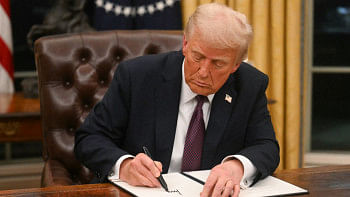Tripartite cooperation for Hilsa conservation
Bangladesh, India and Myanmar today agreed to work together for collaborative efforts to conserve Hilsa, the national fish of Bangladesh.
The pledge was taken in a two-day long regional seminar Sustainable Management of Hilsa Fishery in the Bay of Bengal Region at a Dhaka hotel this afternoon.
Bangladesh alone produces 60 percent of the Hilsa in the world. Last year, the yield was 3.87 lakh metric tonnes. India and Myanmar constitutes the rest of the 95 percent that these three countries produce together.
READ MORE: Hilsa the mystery fish
Bangladesh is already in an agreement with India, a memorandum (MoU) inked during Indian Prime Minister Narendra Modi's visit to Dhaka, on "blue economy" and maritime cooperation in the Bay of Bengal.
Blue economy, a concept that is emerging worldwide, is the exploitation of the resources available naturally in the oceans – that constitute about 70 percent of the earth.
For Bangladesh, the Ministry of Fisheries and Livestock explained blue economy will act as a framework of sustainable development where the seas will be "development spaces," a report prepared by the ministry said.
Speakers, at the programme on Hilsa conservation, said around three million people in Bangladesh are directly and indirectly dependent on the Hilsa fishery. Bangladesh earns 1 percent of GDP by exporting Hilsa.
Participants from Bangladesh, India and Myanmar took part in the programme. Muhammed Sayedul Hoque, Bangladesh's minister for fisheries and livestock, was the chief guest at the programme.


 For all latest news, follow The Daily Star's Google News channel.
For all latest news, follow The Daily Star's Google News channel. 








Comments